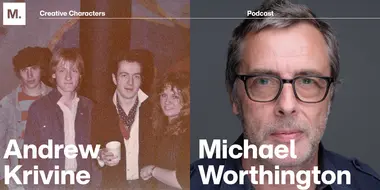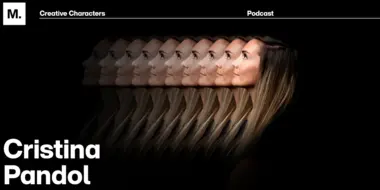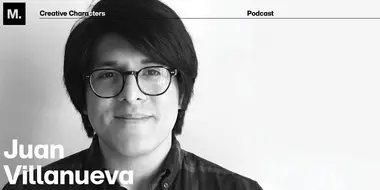Creative Characters S2 E9: Nathan Lance – How to build an (authentic) sustainable brand.
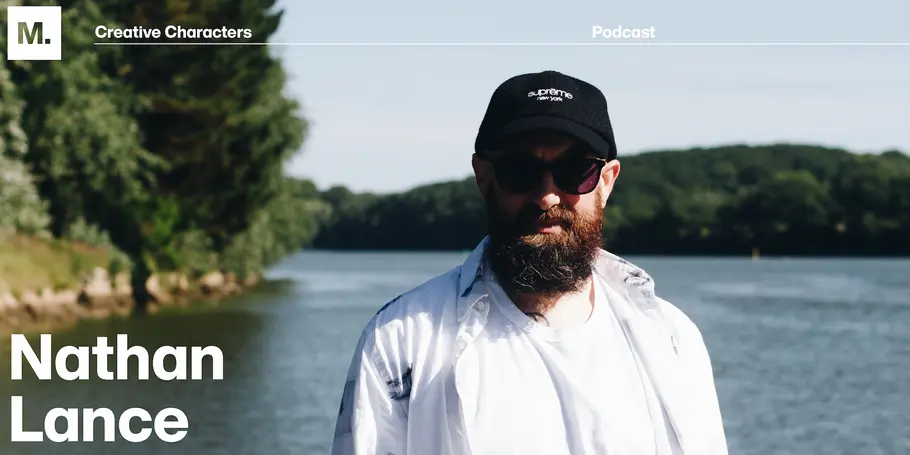
Nathan Lance.
This week’s guest is passionate about designing for change. Today, we’re welcoming Nathan Lance, creative director at Leap, a B Corp certified design agency in Truro, England. Nathan is here to enlighten us on eco-friendly design, sustainability, and brand transparency.
Making waves for change.
Leap. Design for Change is a digital agency that specializes in creative campaigns to help clients have a bigger impact. As creative director, Nathan is focused on shifting the perspective of how clients relate to the term sustainability. He believes that 99% of brands want to do good, but they don’t know what that involves.
I think most clients come to us and think that sustainability comes with an extra price tag; that they’ll be charged 20% more just to make their brand sustainable. What we’re really trying to do is change that thinking completely. Sustainability isn’t this bolt-on feature to your rebrand.
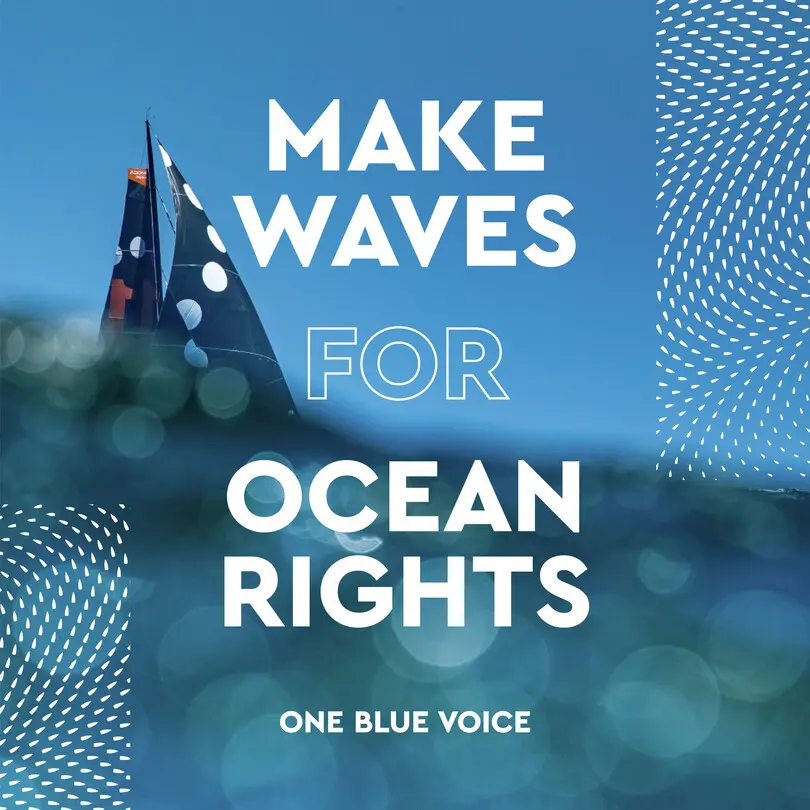
Nathan’s initial conversations with clients include discussing their mission for being sustainable, what they already do to be eco-friendly, their existing internal policies, and why they’re looking to change. Studio critiques are then about finding the balance of making a sustainable project while not sacrificing any creativity or output.
To hear more advice about how to approach client conversations around sustainability, listen to the podcast.
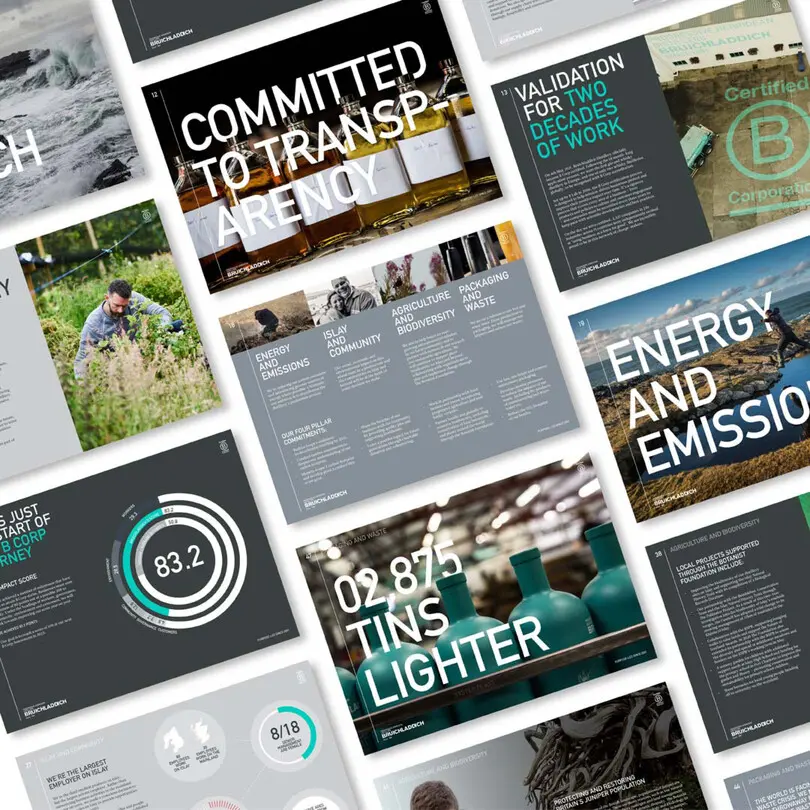
Walking the walk.
According to Nathan, the key to building brand trust around sustainability is that clients show their intent to do better over time. Change is a slow process, so intentionality is paramount.
“We shouldn’t make companies look at the roadmap of sustainability and not want to start because they feel like they have to change everything immediately.”
Along with being dedicated to long-term change, companies also need to accept that they may make some mistakes along the path to sustainability. Instead of fearing these moments, brands can share these mistakes to create a level of brand transparency.
To encourage the shift towards a more sustainable future, Nathan believes there’s a need for companies to find joy within the process. This will keep them going despite the challenges.
“We have to make sure we enjoy what we do and not view sustainability as always a reduction of things. It’s a change and an exploration of other ways we can do things, not, ‘we need to choose a more boring or more restrictive way.’ It’s just reframing what we’re trying to do together.”
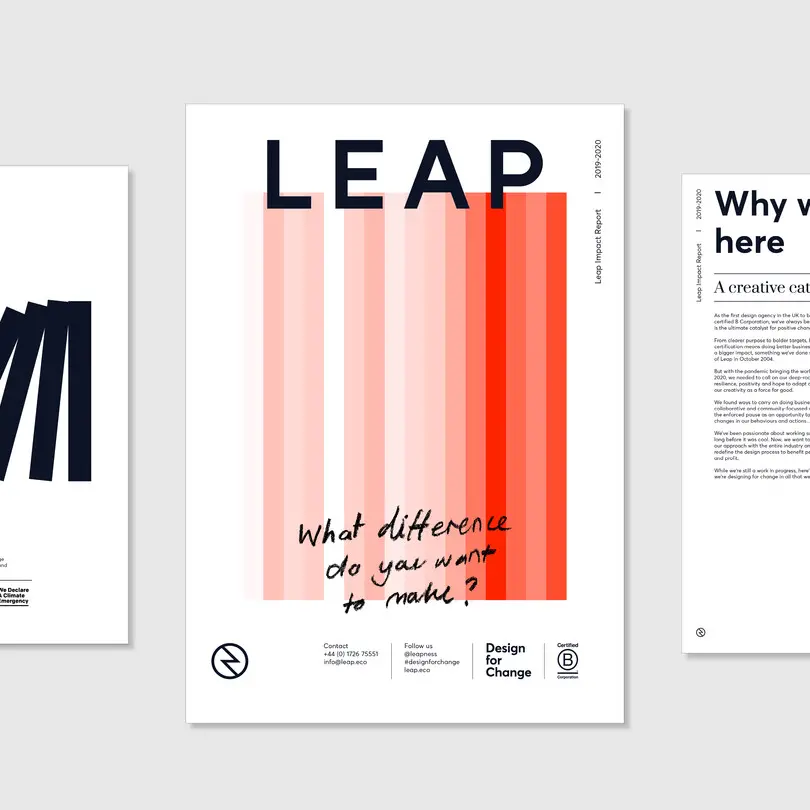
How to measure a brand’s footprint.
Nathan is also passionate about the importance of impact reports to measure the full impact of brands’ actions. Leap doesn’t just measure the profit earned from each client project. The team also measures their positive impact – whether that be the number of people helped or trees planted from a campaign.
“We’re used to selling shiny brands and things that look cool, but then when you get to the bit where you discuss what a hiring policy looks like, or how much revenue do you give to charity in free hours this year, those are the real conversations that bring in clients that want to work with you for the long haul.”
He recently worked on a campaign for Barnardo’s, a UK children’s charity, to explore how to better prepare care-leavers with life skills. The “people impact” is that the client program is now being expanded on a nationwide scale, with the potential to reach 150,000 young people in or leaving care.
Another recent project the team produced was to help promote diversity in schools. “Diversity in work and sustainability is huge. We have conversations on are we trying to just sustain the trajectory that we’re going in, or are we trying to improve it?”
The team at Leap is also focused on activism and environmental sustainability, as seen in the project for Don’t Cry Wolf.
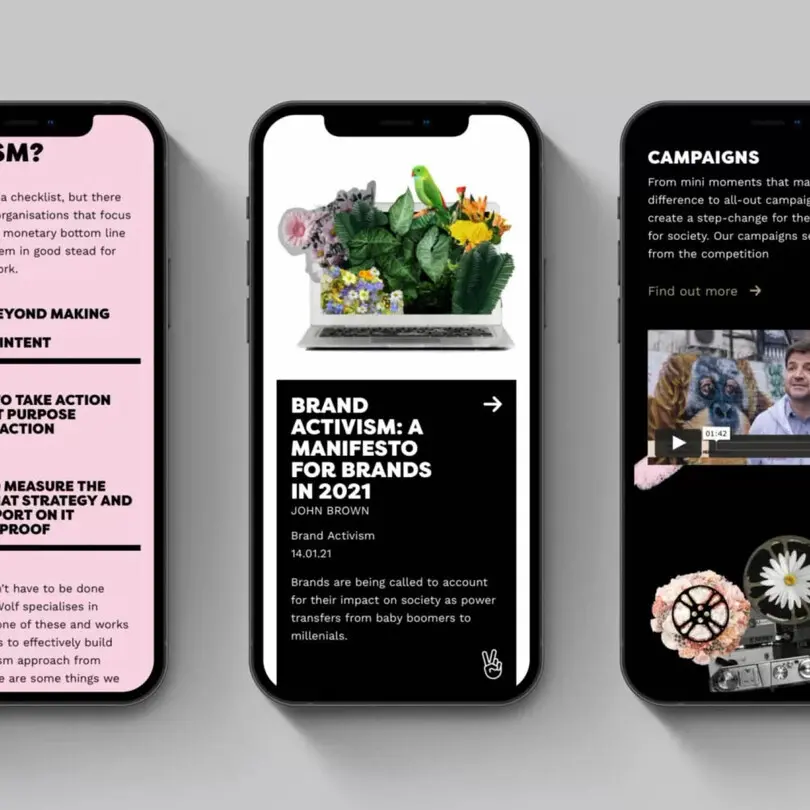
Designing for good.
The overarching, long-term goal of Leap is to change how society operates. While design has been seen as a business tool for years, it can also be a tool for positive impact. Nathan hopes designers begin to see the role they can play in creating this change.
“If every designer had some sort of positive impact conversation when they receive the brief —whether that trickles down or not — eventually something’s gonna sink in and there’s gonna be change that happens. I think it’s about getting designers used to having power and to really understand the responsibility that we have in helping make the world a better place.”
Thanks for tuning in! To see more design projects from Leap. Design for Change, view their case studies online. For more information on the agency’s sustainability ethos, visit the Leap website.












